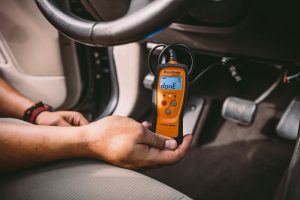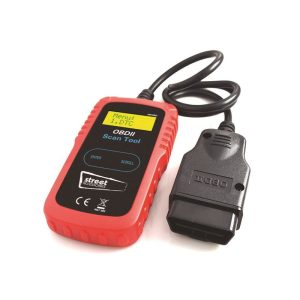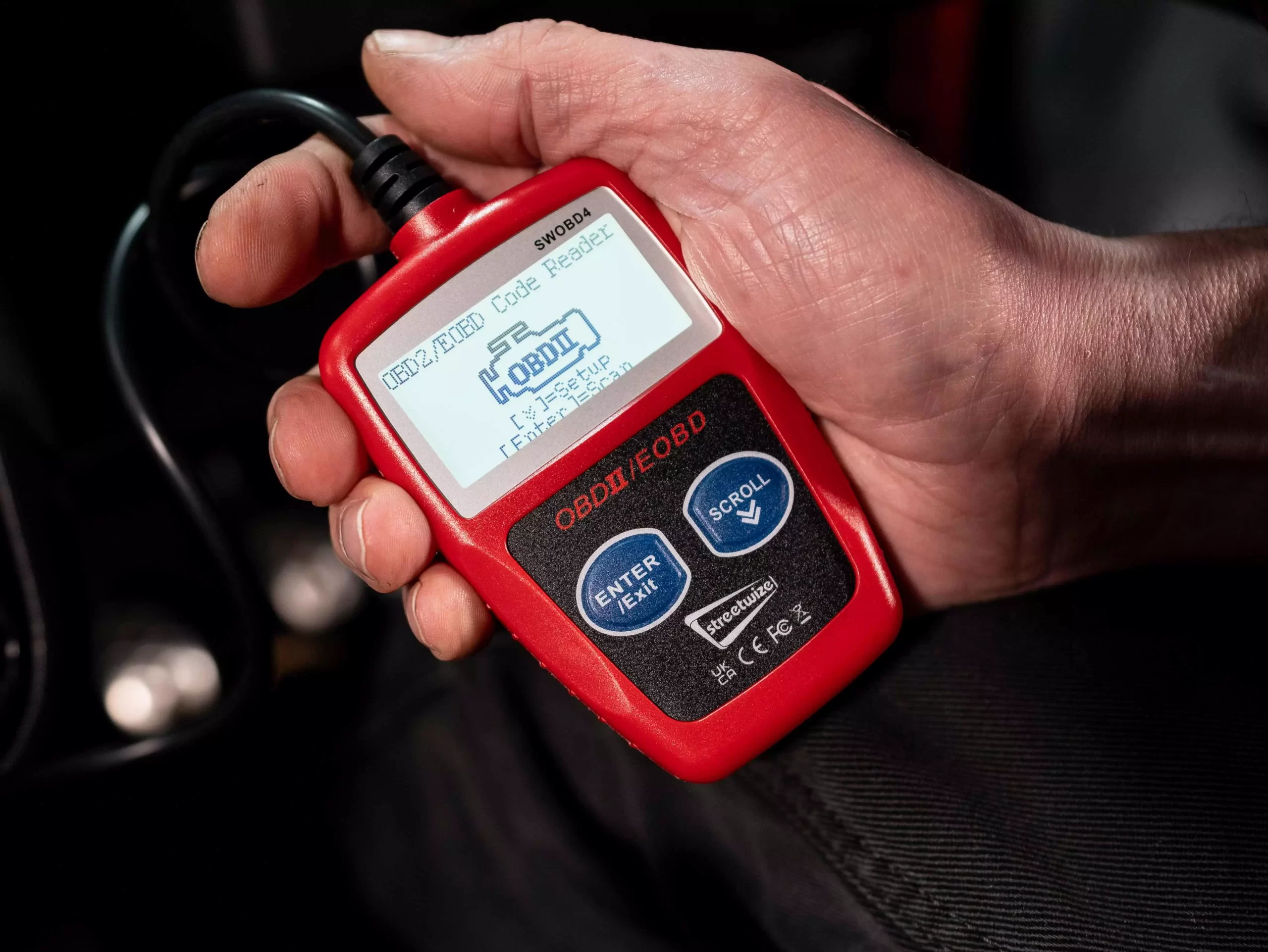What Is an OBD2 Scanner?
If you’ve ever seen that pesky check engine light glaring at you from your car’s dashboard, you know the feeling of dread it can evoke. But fear not! The solution lies in a handy device called an OBD Code Readers and Scanners.
OBD stands for On-board Diagnostics, and if your car was manufactured between 1996 and today, it likely has an OBD2 port tucked away beneath the driver’s side dash. This port resembles the one you’d find on a desktop computer tower where you plug in the monitor. The purpose of this port is to help automotive technicians diagnose faults and other issues by recording error codes that correspond to various problems in your vehicle.
An OBD2 scanner is a small electronic device that plugs into your car’s OBD2 port. Once connected, it reads these diagnostic trouble codes (DTCs) stored in the onboard computer system. In the past, OBD2 scanners were primarily used by professional mechanics and dealerships. However, as technology advanced and manufacturing costs decreased, they became accessible to everyday consumers like us.
How Does an OBD2 Scanner Work?

Using an OBD2 scanner is straightforward:
- Plug It In: Just like Glade taught us, “Plug it in, plug it in!” Insert the OBD2 scanner into the OBD2 port.
- Power On: Most OBD2 scanners are battery-powered, so turn them on to read the engine’s codes. Some scanners draw power directly from the OBD2 port itself.
- Read the Codes: Depending on the scanner, you may need to select a code read prompt or it might read the codes automatically. Once done, you’ll have the specific engine code related to your car’s fault. More advanced scanners may even provide details about what the code means.
Types of OBD2 Scanners
- Display OBD2 Scanners: These scanners show the error codes generated by your vehicle’s computer. While they provide limited information, they serve as a solid starting point. You’ll need to do additional research to understand the meaning of each code.
- Diagnostic OBD2 Scanners: For those serious about auto repair, diagnostic scanners offer more detailed information. They reveal inner workings such as engine coolant temperature, air-fuel ratio, and other critical data.
Why Use an OBD2 Scanner?
- Cost Savings: Correctly used, OBD2 scanners can save you a bundle in auto diagnostics and repair costs.
- Empowerment: Owning an OBD2 scanner puts you in control. Instead of feeling helpless when the check engine light appears, you can diagnose issues and decide on the next steps.
So next time that little check engine light mocks you, remember that your trusty OBD2 scanner is there to shed light on the problem—no insurance fraud required!
�
What are some common OBD2 error codes?
OBD2 error codes, also known asDiagnostic Trouble Codes (DTCs), provide valuable insights into your vehicle’s health. These codes are stored by the onboard computer diagnostic system when it detects issues in the car. Let’s explore some common ones:
- P0128: Coolant Thermostat (Too Low)
- Indicates that the engine coolant temperature is below the expected range.
- Possible causes: Faulty thermostat, low coolant level, or a malfunctioning temperature sensor.
- P0171 and P0174: Engine Running Lean
- These codes suggest that the engine is receiving too little fuel relative to the air intake.
- Potential reasons: Vacuum leaks, faulty oxygen sensors, or a clogged fuel filter.
- P0300: Cylinder Misfire
- Indicates that one or more cylinders are misfiring.
- Causes: Ignition system issues (spark plugs, ignition coils), fuel delivery problems, or vacuum leaks.
- P0401: Exhaust Gas Recirculation (EGR) Flow Insufficient
- Points to insufficient EGR flow, affecting emissions control.
- Possible culprits: Clogged EGR valve, faulty EGR sensor, or vacuum leaks.
- P0442: Emissions Leaks on the EVAP System
- Indicates a small leak in the evaporative emission control system.
- Common causes: Loose gas cap, damaged hoses, or a faulty charcoal canister.
- C0031: Left Front Wheel Speed Sensor
- Related to the anti-lock braking system (ABS).
- Possible issues: Damaged wheel speed sensor or wiring problems.
- C0036: Left Rear Tone Wheel
- Another ABS-related code.
- Causes: Faulty tone wheel (used for wheel speed detection) or wiring issues.
- C0045: Brake Pressure Sensor Problem
- Indicates an issue with the brake pressure sensor.
- Potential reasons: Sensor failure, wiring problems, or hydraulic brake system issues.

Remember, these codes serve as clues, and further diagnosis is necessary to pinpoint the exact problem. Consult your vehicle’s service manual or use a reliable OBD2 scanner to get detailed information on the specific fault.
�
How do I clear OBD2 error codes?
Clearing OBD2 error codes can be done using either an OBD2 scanner or a manual method. Let’s explore both options:
Clearing OBD2 Codes With a Scanner
- Hook the OBD2 Scanner: Insert the OBD2 scanner into your car’s OBD2 port. Ensure that your vehicle is turned off.
- Turn On the Scanner and Ignition: Power on the OBD2 scanner or launch the scanner app on your mobile phone. Then, turn the ignition key to the “on” position.
- Clear the Code: Locate the trouble code on your scanner, and use the clear button to erase it. Check if the warning light is still illuminated by turning on your car’s ignition. If the light persists, consider seeking professional assistance or performing an advanced scan to identify the actual issue12.
Clearing OBD2 Codes Without a Scanner
While not always ideal, you can still clear OBD2 codes without a scanner using the following steps:
- Disconnect the Battery: Park your car in a safe area and open the hood. Remove the negative (-) cable from the battery. Then, remove the positive (+) cable. Make sure the cables are well away from each other.
- Cycle the Ignition: Turn the ignition on and off 3-5 times. To drain any residual power from the ECU, hold down the horn on your steering wheel for 30 seconds to 1 minute.
- Wait: Allow 10-20 minutes for the ECU to fully reset.
- Reconnect the Battery: Clamp both cables back onto the battery terminals, starting with the red cable. Ensure they are securely latched.
- Check for Lights: Start the engine and observe the console. By the time your engine warms up, any warning lights should have turned off. If the check engine light persists, repeat the procedure to ensure complete ECU drainage3.
Remember that while these methods can clear codes, further diagnosis may be necessary to address underlying issues. If the light returns shortly after clearing the codes, consult a professional mechanic for a thorough inspection.
�
What if the check engine light comes back after clearing codes?
If the check engine light stubbornly returns after you’ve cleared the codes, don’t fret! Here are some steps to troubleshoot the issue:
- Check for New Codes: First, use your trusty OBD2 scanner to read any new diagnostic trouble codes (DTCs). These fresh codes might provide clues about the persistent issue.
- Inspect Connections: Ensure that the OBD2 scanner is properly connected to the OBD2 port. Sometimes loose connections can lead to incomplete code clearing.
- Verify Repairs: Reflect on any recent repairs or maintenance you’ve performed on your vehicle. Did you fix the underlying problem that triggered the initial codes? If not, address those issues.
- Drive Cycles: Some vehicles require specific drive cycles to reset the readiness monitors. Drive your car under various conditions (city, highway, stop-and-go) to complete these cycles.
- Monitor Sensors: Keep an eye on critical sensors like the oxygen sensor, MAF sensor, and EVAP system. Faulty sensors can trigger recurring codes.
- Professional Diagnosis: If all else fails, consult a professional mechanic. They have specialized tools and expertise to diagnose complex issues beyond what a basic OBD2 scanner can reveal.
Remember, persistence pays off! Keep calm, stay informed, and let your OBD2 scanner be your trusty sidekick in unraveling the mysteries of your car’s engine.


